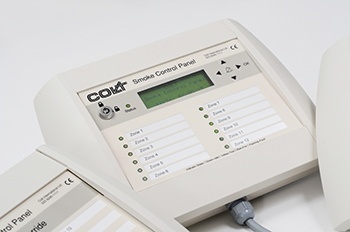 As a property owner or developer, when you have to make a decision on the best control system for smoke ventilation in your building, you are faced with a bewildering amount of information and conflicting opinions as to the most effective approach. Should you opt for a fire alarm control system, an HVAC/BMS control system or one specifically designed for smoke ventilation? Should you choose open or closed protocol?
As a property owner or developer, when you have to make a decision on the best control system for smoke ventilation in your building, you are faced with a bewildering amount of information and conflicting opinions as to the most effective approach. Should you opt for a fire alarm control system, an HVAC/BMS control system or one specifically designed for smoke ventilation? Should you choose open or closed protocol?
Where to start?
The starting point is to have a clear idea of the key features the control system must have to give you the effective smoke ventilation you need for your building:
- Above all else, robustness and reliability are the key characteristics you must look for.
- The control system should be self-monitoring, constantly checking for failure. If the system senses imminent failure, it should instigate a restart. Importantly, when it has re-started, the system should remember what it was doing before the crash.
- The system should monitor not only the communications around the network but also the devices themselves, ensuring full network integrity. When it loses communications with a device on the network, an alarm should be activated and the device lost should default to a failsafe position or in its current state, depending on the system design.
- It should retain a cause and effect and be able to follow it for a given input, without deviating in the event of a second input. This is on the basis that the smoke ventilation system is rarely designed for more than one fire incident at any one time and the first incident detected is the only one to be acted on, all subsequent events to be locked out.
- The system should be able to continue operation even in the event of primary power failure.
- In a system serving multiple fire compartments, only the compartment on fire should be vented, all others should remain separated.
- There should be a facility for the Fire Service to override the operation of the system by setting it into action, or stopping it, or re-setting it into a different mode of operation.
Most smoke control systems are designed for life safety purposes, so to perform effectively, these are the functionalities you can’t do without and they are the key criteria that can guide you in making your choice.
 Conor Logan is Associate Technical Director of Colt UK, Smoke and Climate Control Division. Conor designs innovative smoke control and HVAC systems and is also Chairman of the Smoke Control Association.
Conor Logan is Associate Technical Director of Colt UK, Smoke and Climate Control Division. Conor designs innovative smoke control and HVAC systems and is also Chairman of the Smoke Control Association.


